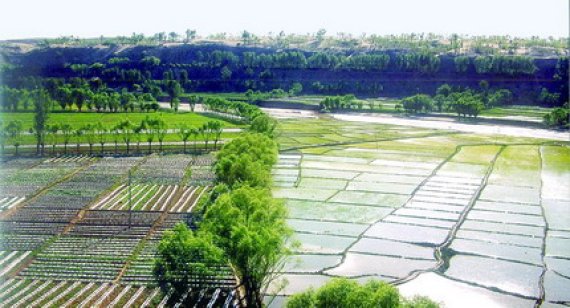In the 80’s and 90’s of last century the upstream part of the Yellow River was the most eroded area in the world. The river’s name is even derived from this. ‘The sediment load sometimes reached a kilo per litre of water: it was more of a mudslide’, says professor Soil Physics and Land Management Ritsema. It was obvious that something had to happen. Together with the Institute for Soil and Water Conservation (ISWC) and other Chinese and European partners Rietsema started in the mid-90s.
Detailed lab and field research mapped out the hydrological and soil processes which underliethe severe erosion. Effects of possible methods were calculated. It was found that specific combinations of methods could greatly reduce the erosion. Ritsema: ‘Recommendations were made about the design of river basins and the conservation of soil and water. It is better to avoid agriculture on the steep slopes of the Loess Plateau for example, as well as stray goats that strip the land.’
Since that first project an ongoing cooperation has formed between Wageningen and the ISWC in Yangling. According to Ritsema the projects became larger and more global. Measures from the Chinese government since the end of the 90’s led to ecological recovery of the Loess Plateau. ‘In a relative short time of fifteen years the strongly degraded and bare landscape regrew and was brought back to the natural state. This also dramatically decreased the sediment load of the Yellow River. The area looks totally different.’
That long-term collaboration was ratified today with the Memorandum of Understanding. Because despite the success, the research does not stop. ‘The erosion has reduced’, explains Ritsema, ‘but one of the consequences of the regrowth is that there is less water available for the users downstream. While the demand for water continually increases. In addition the rapid increase in pesticides used is cause for great concern for the quality of the water andsoil.’


